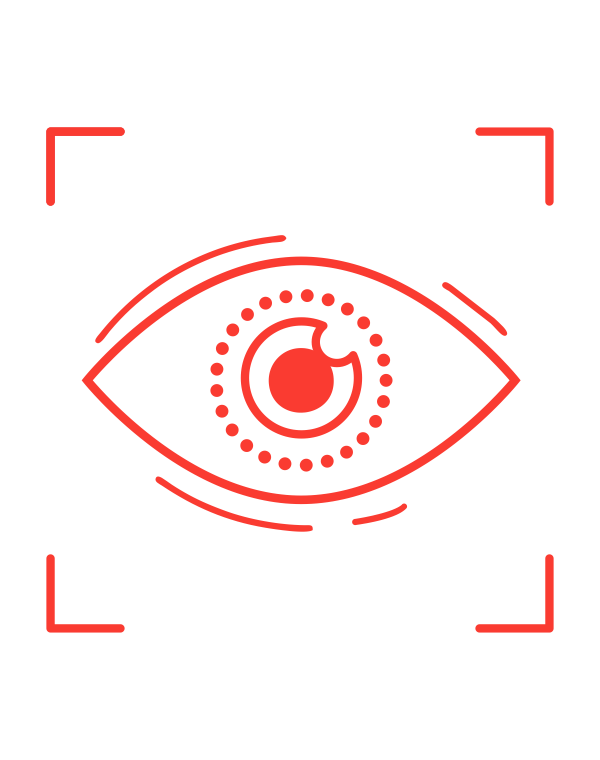Iridology is a VedaPulse software module for assessing the condition of your patients, which allows you to identify the connection between the unique signs of the iris of the eye and diseases of internal organs, helping to determine the correct therapy protocols. With the help of the module, you will be able to independently master the holistic method of iridodiagnosis.

About the method
Iridology is a holistic diagnostic method that allows you to determine the health status or recognize the presence of diseases in a person by changes in the iris of their eye.
Since ancient times, doctors have assessed the state of the body through the so-called windows of the body - the eyes, ears, nose, mouth and skin. Over time, it has been found that the "windows of the body" are very sensitive intermediaries between the external world and the internal environment due to the external receptors concentrated in them. Together, they form a well-coordinated system of direct and reverse afferent pathways by which the signals from the body are transmitted to the outside, to the projection zones of the five sensory organs: the iris of the eye, the pinna, the skin, the mucous membranes of the nose and the tongue.
Empirically, different projection zones have been identified on the iris of the eye - the zone of the stomach, intestines, heart, lungs, etc. Changes in one or another projection area of the iris can carry information about the problems of the relevant organs and systems.
Most iridological signs are present before birth and are constitutional risk factors. They may not manifest themselves for a long time, they may not be compensated for, but they do manifest themselves when external or internal factors worsen.
Therefore, when assessing a person's condition, it is always necessary to take into account many signs obtained in different ways. The addition of HRV to iridodiagnosis, tongue diagnosis and thermography allows for a more accurate assessment.
How it works?
In order to assess the condition, a questionnaire is presented that allows the selection of the type, density of the iris, shape of the autonomous ring, surface condition, pupil size, presence of heterochromia, type of pupil border, presence of iridological signs characteristic of the iris as a whole and reflecting the general human condition: toxic spots, toxic radiations, lipid-sodium ring, lymphatic rosary, dystrophic rim, white radiations, adaptive rings, acidosis. When selecting an item in the questionnaire, a description of a possible pathological condition is added to the report.
The Iridology module presents two schemes of projection zones: according to E.S. Velhover and according to B. Jensen.
In each projection zone, a list of possible morphological changes of the iris is displayed (lacunae of various types, vessels, rays, rings, etc.). In right-handed people the projection of the organs on the iris is homolateral, in left-handed people it is heterolateral (i.e. the right half of the body is reflected on the left iris and the left half on the right).
It should be noted that the appearance of irido signs may not be due to the pathology of the organ, but may be associated with the pathology of the conducting nerve tracts, and also with the type of reflected reflex connections (for example, a lacunae in the projection area of the left hand in angina pectoris).
By selecting an item from the drop-down menu, a description of a possible pathological condition is added to the report.
Iridology
The Iridology module contains 2 tabs
In the Upload tab, you can upload an image of the eyes, manually adjust the position of the labels to highlight the pupil and iris.
You can take an image of the iris of the eye with a smartphone camera if there is a macro mode. It is also recommended to use special iridoscopic cameras or macro lens on the smartphone camera. Diagnostic capabilities strongly depend on the quality of the image. Use high-sensitivity cameras with good resolution and high-quality optics.
The Assessment tab displays an image of the iris of the eye with an interactive map of projection zones applied to it and a report.
In the upper left corner of the image there is L/R switch. It allows you to analyze the left and right eyes separately, respectively.
The program highlights the areas on the iris that you need to pay attention to, based on the heart rate assessment. Zone highlighting can be disabled (in the lower left corner of the image).
When hovering over a certain zone, you will see a pop-up - tips. When clicking on the zone, a window, that allows you to select the presence of iridological features specific to this zone opens. After the selection, there is a decoding of possible diseases in the report.
In the Assessment window, select the required values for Types and States (you do not need to select all items).
The Report window will display descriptions of the pupil defects you have noted from the point of view of iridodiagnosis.
A quick reference guide to Iridology
Who will benefit from using this module?
The Iridology module allows wellness specialists conduct a holistic assessment of a patient's condition, identify functional changes in the organs and systems to trace the effectiveness of a comprehensive rehabilitation program.


